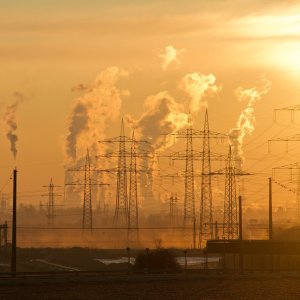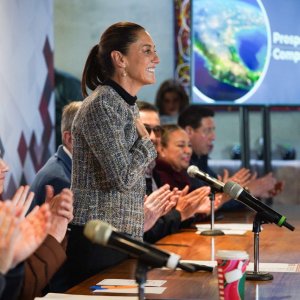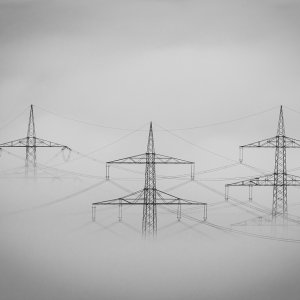Urgent Need for the Electricity Sector to Deliver

STORY INLINE POST
During the Energy Reform proposal presentation in early August 2013, President Enrique Peña Nieto said, “If we carry out this reform, gas and electricity prices will go down, and our countryside will benefit from higher fertilizer production.” He also noted that even though a third of the electricity generated in Mexico is produced by the private sector, this electricity is predominantly used by big companies that have the capacity to enter the self-supply scheme.
Lourdes Melgar, Electricity Undersecretary of Mexico’s Energy Ministry (SENER), notes that the Energy Reform aims to improve the competitiveness of Mexico’s power sector and reduce the electricity rates, which are high both by local and international standards. “Getting lower power rates is a high priority for our government. Without those we cannot achieve the growth that the country needs,” she claims. Melgar explains there are three priorities that will frame the Peña Nieto administration’s actions in the electricity sector. The first is creating a generation market in which all energy sources, particularly renewables, can be promoted. Expanding transmission infrastructure is another pending issue and represents a huge challenge since, according to SENER figures, 47% of Mexico’s transmission lines are more than 20 years old. Additionally, there is discontinuity between the north and the south of the country; the grid is much denser in the southern part of the country, leaving grid density in the north in need of further development. Transmission lines that are able to connect renewable energies to the grid also have to be developed. Melgar says this is not only true for wind energy in areas like Oaxaca, Baja California or Tamaulipas, but also for solar and geothermal energy. The third priority is to improve and modernize the distribution side of the power sector to reduce losses. “We suffer important technical losses, on average about 15.5% of total generated electricity, but there are areas of the country where losses reach 30% or 35%,” Melgar stresses. Another challenge that Melgar says has to be faced is reducing the electricity debt and underpayment which is still common in certain regions of Mexico, due to a culture of not paying for electricity.
SENER must also address any social issues that may arise. The Undersecretariat of Electricity is working directly on developing protocols to deal with agreements signed with indigenous people and members of other communities. It has technical groups in which different federal bodies participate, such as SEMARNAT, the Ministry of the Interior and CFE, as well as governments from different states and municipalities. The idea is to develop specific protocols depending on the type of technology that will be used; namely different protocols for wind power, hydro power, and transmission lines. “We need a set of protocols that covers most of the developments that take place in the power sector, and that can be approved as part of Mexico’s general protocols,” Melgar says.
Regarding the creation of a generation market, in which CFE, PEMEX and private participants can take part, Melgar stresses that an independent system operator (ISO), CENACE, is being created separately from CFE. Former regulation saw CFE run transmission and distribution, creating a potential conflict of interest if CFE was reluctant to allow perceived competitors equal access to the grid, according to Melgar. “There is a natural monopoly in transmission and distribution. We are allowing CFE to continue being the owner of the transmission lines, but CFE does not decide on their expansion. CENACE will decide where and how we connect and expand the lines. It will also take care of feasibility studies to determine where other participants are going to be interconnected,” she says. The possibility of CENACE penalizing CFE if it decides not to grant access to projects has also been discussed, Melgar added.
CRE determines the wheeling rate for using transmission and distribution lines. The Energy Reform stipulates that, even though transmission and distribution stays in CFE’s hands, it will be able to hire private companies to build and operate its transmission lines. This scheme will be cheaper than the current Open Season scheme for expanding transmission lines to renewable energy projects which Melgar sees as an expensive and slow way to build needed transmission lines. “According to CFE, Mexico should be increasing its transmission lines by 1.1% over the next few years to match an increasing demand of 4.1% per year. This rate is extremely low. In other parts of the world, if you increase your demand by 4.1%, you should expand your transmission infrastructure by at least 6%,” she argues. There is no doubt transmission lines should be developed but it represents a huge investment that Melgar claims the Mexican government cannot make on its own. A similar scheme is being proposed for distribution, not only to modernize distribution lines but also to implement international best practices. “We need to create the opportunity to establish contracts with private companies through international tenders, and bring in new technologies to reduce technical and non-technical losses as rapidly as possible,” Melgar states. Since the Energy Reform does not entail privatizing CFE, the opportunity to introduce different types of contracts will be opened up. As for CRE, “the main proposal is to strengthen it in a significant way. CRE would have a fundamental role in overseeing the market, in establishing certain rates and in granting permits. It would maintain a very active role,” says Melgar.
But what is required to meet the goal of having 35% of Mexico’s energy coming from renewables by 2024? The Undersecretariat of Electricity is in charge of approving CFE’s investment program and it has emphasized the importance of CFE complying with all the laws, without being selective. Melgar stresses that CFE has to meet with climate change and renewable energy targets. It has to make sure that any proposal that it brings for approval meets this challenge. “We must have 35% clean energy by 2024 and we are very far from that goal,” she says.
In order to reach this mandate, the prominence of natural gas has increased in the energy mix. 85% of power generation in Mexico is based on hydrocarbons, including 22% on fuel oil. Melgar explains fuel oil not only has twice the amount of emissions as natural gas but is also four times as expensive.
Part of the idea, Melgar emphasizes, is to be able to achieve the 35% goal while using the full mix of energy sources. SENER is thinking of promoting more nuclear energy given Mexico’s positive experience with the Laguna Verde nuclear power plant. Laguna Verde represents 3% of the installed capacity of the country but at times generates more than 6%, while being one of the cheapest sources of energy in Mexico. However, Melgar explains a decision has not yet been made regarding increasing nuclear power. “We will consider the nuclear side of the equation after the Energy Reform. We are working on strengthening our nuclear regulatory body, on defining nuclear policy, and on improving radioactive waste management. We are updating our nuclear policy, bringing it in line with the conventions that Mexico has already signed. We are, at the moment, looking to increase our capacity, at least in Laguna Verde,” she adds.





















